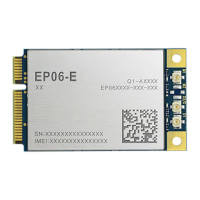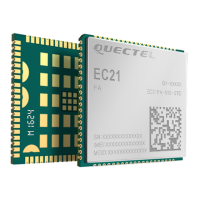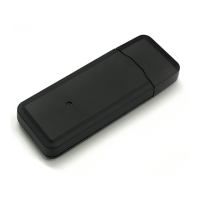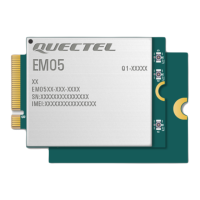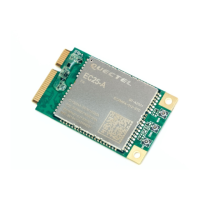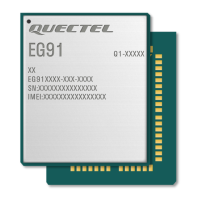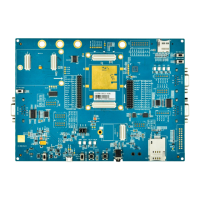9 / 50
Table 2: Key Features of EP06
PCI Express Mini Card 1.2 Standard Interface
Supply voltage: 3.1V~4.4V
Typical supply voltage: 3.3V
Class 3 (23dBm±2dB) for LTE-FDD bands
Class 3 (23dBm±2dB) for LTE-TDD bands
Class 2 (24dBm+1/-3dB) for TD-SCDMA
Class 3 (24dBm+1/-3dB) for UMTS
Support up to CA Cat 6
Support 1.4 to 40MHz (2×CA) RF bandwidth
Support MIMO in DL direction
FDD: Max 50Mbps (UL), 300Mbps (DL)
TDD: Max 28Mbps (UL), 226Mbps (DL)
Support 3GPP R10 DC-HSPA+
Support 16-QAM, 64-QAM and QPSK modulation
3GPP R6 Cat 6 HSUPA: Max 5.76Mbps (UL)
3GPP R8 Cat 24 DC-HSPA+: Max 42Mbps (DL)
Internet Protocol Features
Support PPP/QMI/TCP*/UDP*/FTP*/HTTP*/NTP*/PING*/
HTTPS*/SMTP*/MMS*/FTPS*/SMTPS*/SSL*protocols
Support the protocols PAP (Password Authentication Protocol) and CHAP
(Challenge Handshake Authentication Protocol) usually used for PPP
connections
Text and PDU mode
Point to point MO and MT
SMS cell broadcast
SMS storage: ME by default
Support (U)SIM card: 1.8V, 3.0V
Include USIM and USIM2 interfaces
Support Dual SIM Signal Standy*
Support one digital audio interface: PCM interface
WCDMA: AMR/AMR-WB
LTE: AMR/AMR-WB
Support echo cancellation and noise suppression
Support 8-bit A-law, μ-law and 16-bit linear data formats
Support long frame synchronization and short frame synchronization
Support master and slave mode, but must be the master in long frame
synchronization
Compliant with USB 2.0 specification; the data transfer rate can reach up to
480Mbps
Used for AT command communication, data transmission, firmware

